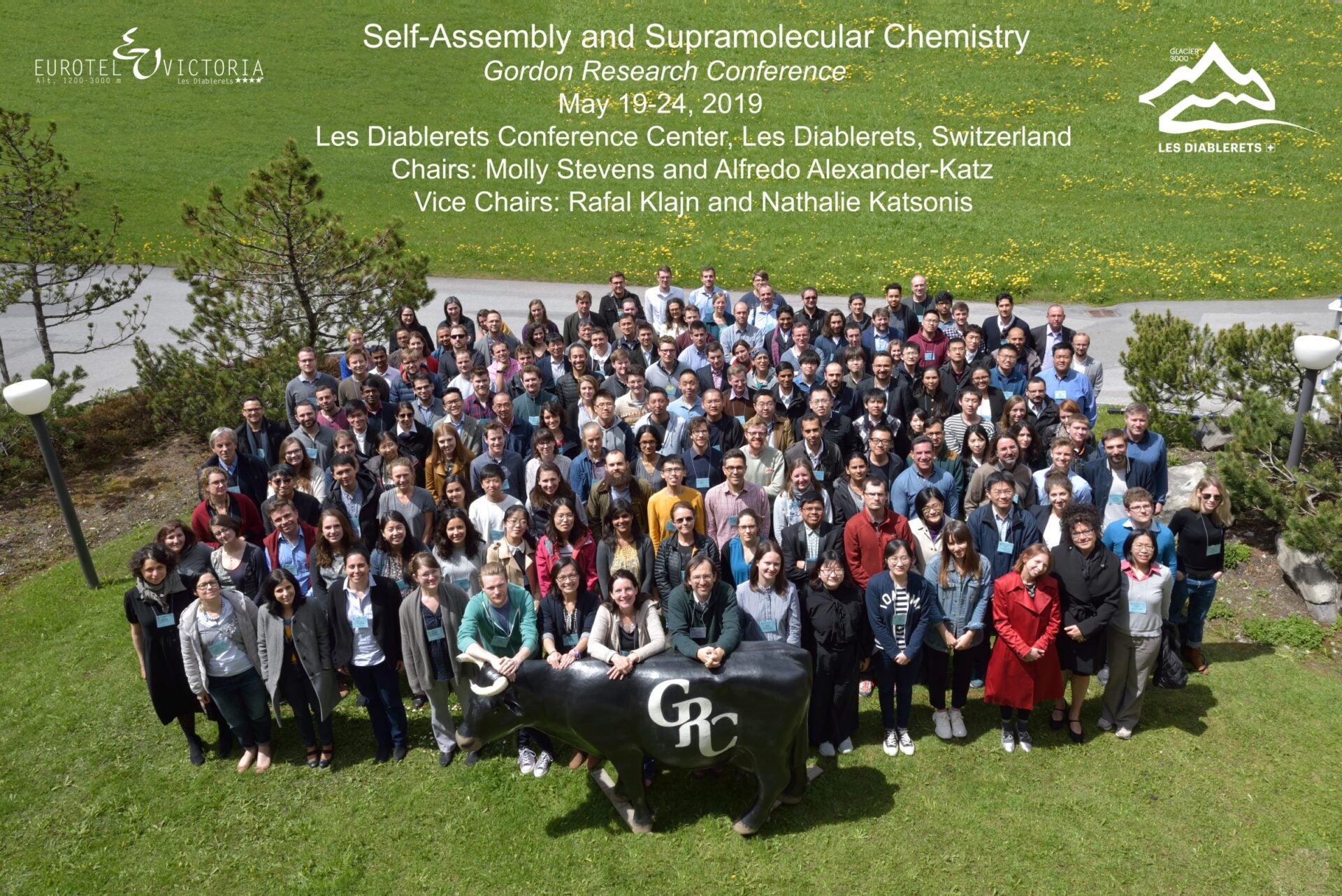
Connecting the Molecules: Supramolecular Chemistry and Energy
Supramolecular chemistry and self-assembly is an area of scientific study that explores how molecules and components of materials organize under various conditions. And it can have an impact in areas such as solar energy, gas separation and storage, and various forms of energy transport and storage.
This spring, on a Kleinman Center student grant, I traveled to Les Diablerets, Switzerland to attend and present at the Gordon Research Conference (GRC) on Self-Assembly and Supramolecular Chemistry.
Supramolecular chemistry and self-assembly is an area of scientific study that explores how molecules and components of materials organize under various conditions. The research in this field has profound applications in emerging energy technologies in areas such as solar energy, gas separation and storage, and various forms of energy transport and storage—since how molecules and materials assemble and interact with each other on various length-scales directly affects the creation of successful materials or devices. Discussions at the conference prove that advances in this area are critical to being able to contribute to energy policy effectively.
For example, when molecules and materials organize on a large length scale, they can be porous, and adjusting the selected components or how they assemble into a larger material can improve the properties of the total material, including selectivity of gas separation and storage. The same assembly processes also effect energy transport and storage by using electronically active molecular components. One class of materials, metal-organic frameworks (MOFs), are particularly interesting for these applications. Certain MOFs can be compared to sponges, absorbing and releasing another substance while maintaining the overall structure of the material. Mircea Dinca’s laboratory at MIT has been working on the assembly of MOF materials for energy storage, such as applications in cars.
These assembly processes can also be dynamic, for example, the components can respond to heat or light in specific ways. The Aizenberg group at Harvard, for example, is creating multiresponsive liquid crystal elastomers and is incorporating these into solar cells. The components of this material orient themselves in a particular direction, but are responsive to light, so they can mimic sunflowers and follow the light—resulting in potentially more efficient light capture for solar cells.
A third way self-assembly processes can impact the energy sector and energy policy is through catalytic applications—materials can be assembled into structures that can produce various chemicals selectively, in high yields, and through green chemistry, by creating structures for chemical transformations to occur within.
While at the conference, I had the opportunity to give a presentation of my work, which focuses on using organic molecules to direct assembly of metal nanoparticles. This invited further discussion about my research, as well as possible international collaborations. Being in a close-knit conference environment gave me the opportunity to have discussions with many researchers, about both research and career development. This experience through the Kleinman Center will no doubt shape my scientific career and my continued interest in policy and supramolecular chemistry.
Do you have an energy idea you want funded? Learn more about our student grants that make opportunities like this possible.
Katherine Elbert
Doctoral CanidateKatherine Elbert is a Ph.D. Candidate in the Department of Chemistry at The University of Pennsylvania.

